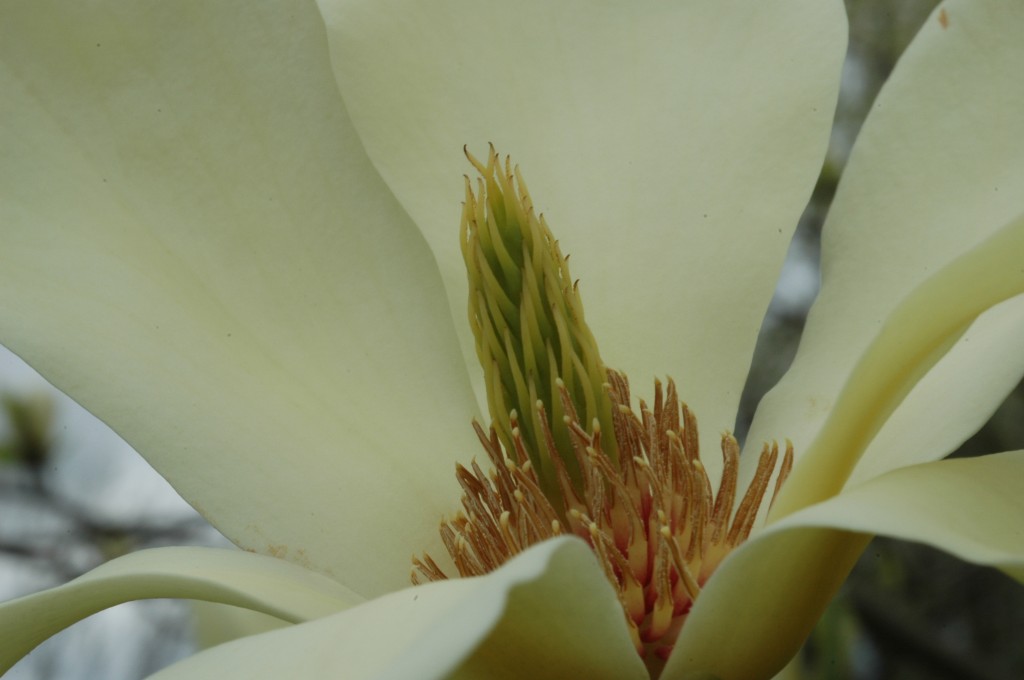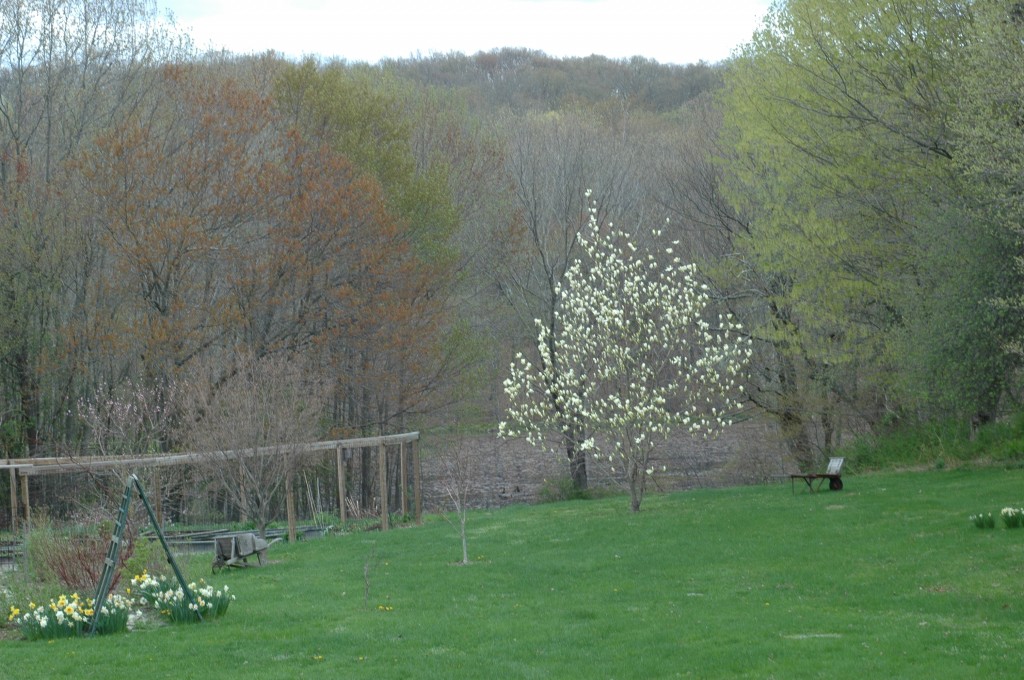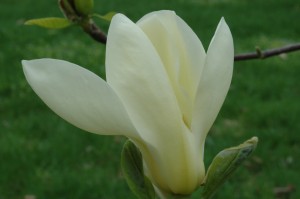 There are no shirkers on my premises. At least, not of the woody kind. If you’re going to hang around in my yard, you darn well better perform. And I’m not just talking about a brief blooming gig, either. I want to be entertained 365. Doesn’t everyone?
There are no shirkers on my premises. At least, not of the woody kind. If you’re going to hang around in my yard, you darn well better perform. And I’m not just talking about a brief blooming gig, either. I want to be entertained 365. Doesn’t everyone?
So, flowers are a nice perk on a magnolia. They’re a thrill, to be sure. But they’re a titillation that is often nipped in the bud, quite literally. What really gets my cardiac kerthudding is the open-branched silhouette of a majestic magnolia.
 “Flowers are gravy,” is what I tell friends the morning after a heavy frost when I rush out to find all my hopes of a sublime blossom display smitten. But the stiff upper lip is really just a cover-up. It’s just my way of justifying one of my many idiotic mistakes. That’s right, you guessed it = I planted a magnolia in a frost pocket. It’s clueless, but true. Hopefully, you won’t fall into the same duh moment. When it comes to magnolias, it’s location, location, location. Without a doubt, you want to put your tree where it will look ravishing. But even more important is finding a place where frost doesn’t settle early in spring.
“Flowers are gravy,” is what I tell friends the morning after a heavy frost when I rush out to find all my hopes of a sublime blossom display smitten. But the stiff upper lip is really just a cover-up. It’s just my way of justifying one of my many idiotic mistakes. That’s right, you guessed it = I planted a magnolia in a frost pocket. It’s clueless, but true. Hopefully, you won’t fall into the same duh moment. When it comes to magnolias, it’s location, location, location. Without a doubt, you want to put your tree where it will look ravishing. But even more important is finding a place where frost doesn’t settle early in spring.
So, my Magnolia ‘Goldfinch’ sometimes get’s zapped. Which is a pity. Because in a gentle year, its yellow, luminous blossoms are a delight to behold. I look forward to them like a child anticipates summer’s first ice cream cone. But when life delivers no desserts, I find solace in the fact that ‘Goldfinch’ has such a fine physique. A hybrid made by Phil Savage of Michigan (with ‘Miss Honeybee’ and M. denudata ‘Sawada’s Cream’ in its lineage and originally called ‘Mailman Yellow’, rumor has it), ‘Goldfinch’ has a broad, spreading habit that fills its space with open arms. And really, most years it manages to come in after the last of the killer frosts. On the other hand, it blooms early in its lifespan.
 Speaking of lifespans, my advice to you is this = Don’t bother to purchase a large-sized magnolia from a nursery. They grow like green lightning. Most take a few years before they blossom (‘Goldfinch’ being an exception and getting right down to business), but they grow rapidly.
Speaking of lifespans, my advice to you is this = Don’t bother to purchase a large-sized magnolia from a nursery. They grow like green lightning. Most take a few years before they blossom (‘Goldfinch’ being an exception and getting right down to business), but they grow rapidly.
‘Goldfinch’ isn’t the only magnolia on my property. I also have a Magnolia stellata hybrid (probably mixed with a M. x soulangiana, but it’s parentage seems to have been a capricious moment rather than planned parenthood). It has white flowers and blossoms much earlier than ‘Goldfinch’. Even so, it usually manages to get a strong blossom stint in simply because it sits close to the road where hot air whizzes by on a regular basis. The flowers aren’t as graceful in form as ‘Goldfinch’, but the tree has a gorgeous profile. It’s especially spectacular when naked. Not everybody can boast similarly.
 Oh, and speaking of naked limbs. Deer seem to like to bully the branches of magnolias on a regular basis, especially in autumn. They rub their antlers against magnolias (why me?) with a vendetta that has provoked me to build a barricade around my trees. ‘Goldfinch’ was scraped to within an inch of its life, but it bravely soldiered on.
Oh, and speaking of naked limbs. Deer seem to like to bully the branches of magnolias on a regular basis, especially in autumn. They rub their antlers against magnolias (why me?) with a vendetta that has provoked me to build a barricade around my trees. ‘Goldfinch’ was scraped to within an inch of its life, but it bravely soldiered on.
Recently, I’ve added to the bounty — trying to stay on the safe side of the frost waves. Since most of my property is on slightly shaky territory for late frosts, my strategy is to go with late bloomers. Both my new additions have glowing colors — ‘Coral Lake’ (luminous peach) and ‘Flamingo’ (the same hue as the name implies). They both seem to have a dense branch structure to form a tighter tree than the open stretch of ‘Goldfinch’. But I’ll keep you posted.
Struggling to conceive? Don’t let high prices stand in your way. At [Brand Name], we understand the emotional and financial strain that fertility treatments can bring. That’s why we’re thrilled to offer clomid at a low price, making it more accessible for those who need it most.
clomid: Your path to fertility
clomid is a trusted and effective medication that can help regulate ovulation and increase your chances of getting pregnant. Our affordable prices mean you can focus on what truly matters – starting or expanding your family.
Don’t miss out – seize this opportunity!
Take advantage of the incredible savings today by visiting our website or contacting our friendly team. We’re here to provide you with the support you need throughout your fertility journey. Affordable solutions are just a click or call away.
